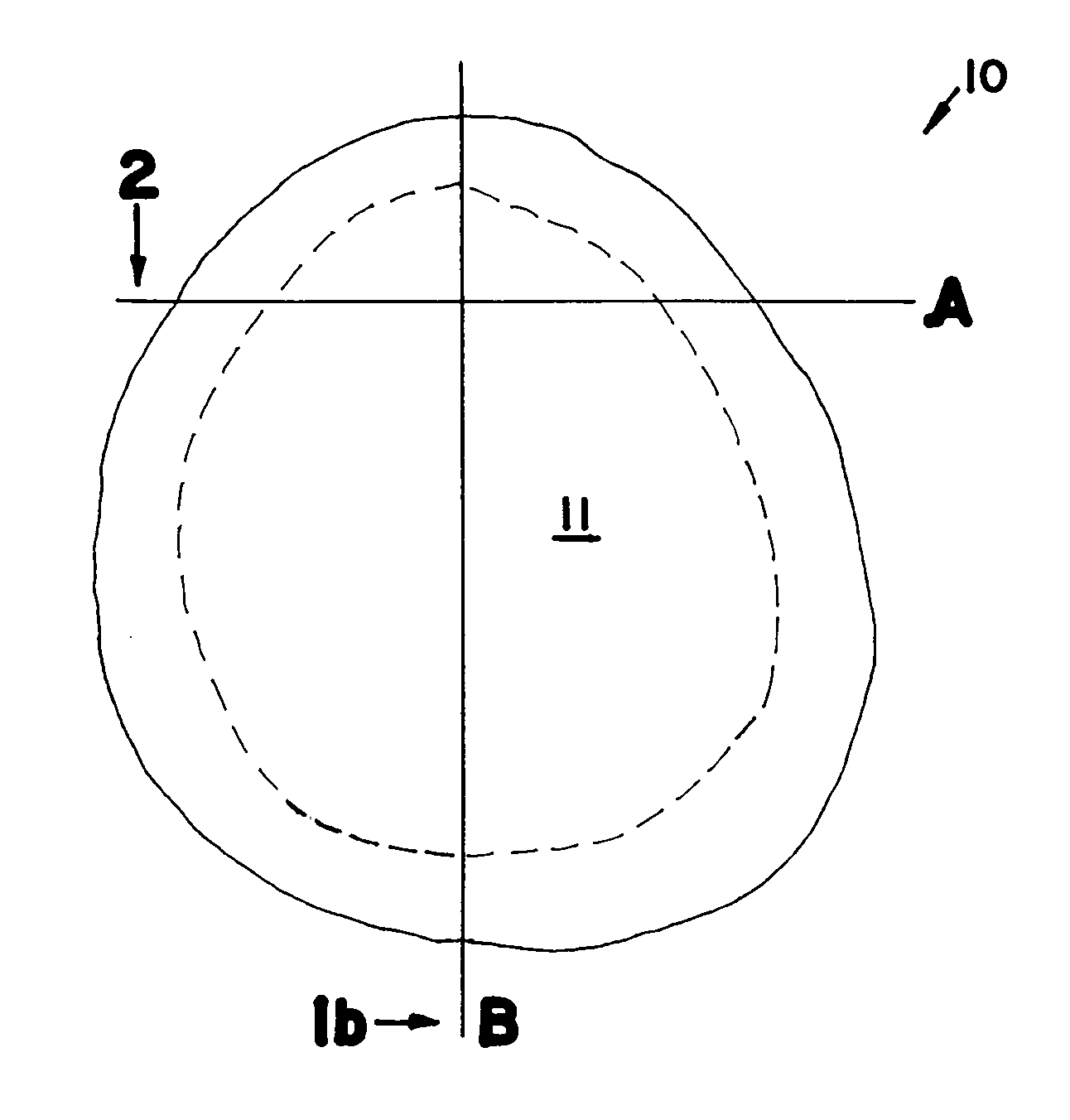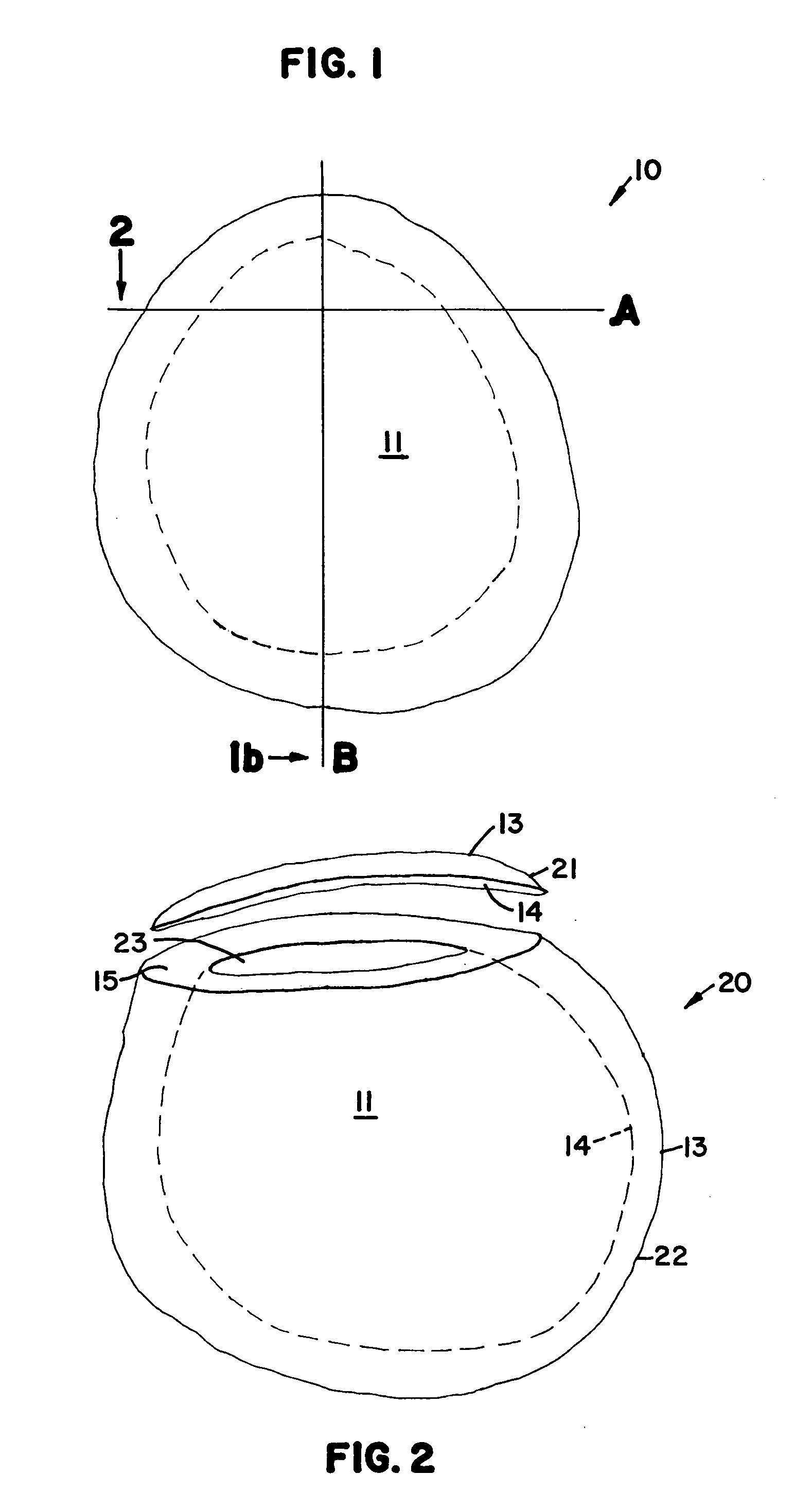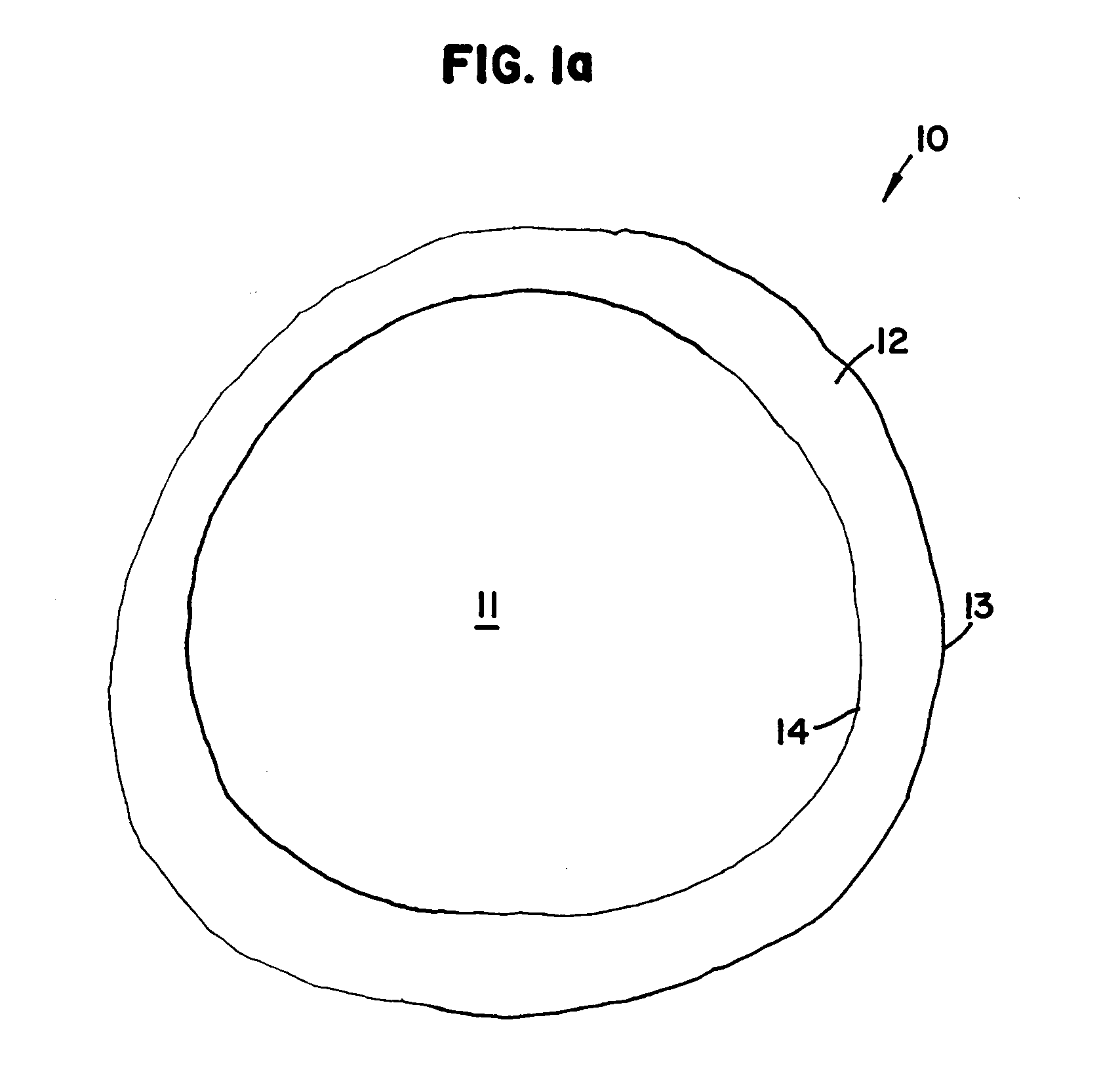Container comprising edible manifold
a manifold and container technology, applied in the field of manifolds for consumption, can solve the problems of limited overall shape and size of products
- Summary
- Abstract
- Description
- Claims
- Application Information
AI Technical Summary
Benefits of technology
Problems solved by technology
Method used
Image
Examples
example 1
Dry Ice Method
[0054] 1. Pre-weigh ingredients.
Patent Flour1300.0gSalt12.4gSugar26.0gInstant Dry Yeast20.0gPastry Shortening52.0gWater750.0g[0055] 2. Add ingredients into an 8 L stainless steel mixing bowl. [0056] 3. Mix dough on low setting (100) for 2 minutes and medium setting (200) for 7 minutes in a Welbilt Varimixer (model W20A) with spiral mixing arm. [0057] 4. Cut dough into 174 g samples. [0058] 5. Round dough balls. [0059] 6. Allow dough balls to rest for 5 minutes. [0060] 7. Press dough into a thin sheet (about 6″ diameter and ½″ thick). [0061] 8. Place thin layer of water around outer edge (to aid in sealing). [0062] 9. Add 2.0 g of dry ice (blasting rice from Jason's Dry Ice) to center of sheet. [0063] 10. Wrap and seal edges so no leaks occur. As dry ice sublimes it will inflate the dough ball to the desired volume. [0064] 11. Place inflated dough balls on baking sheet when at maximum diameter. [0065] 12. Bake in preheated Gemini revolving rack oven at 450° F. for 9 ...
example 2
Chemical Leavening Method
[0067] 1. Pre-weigh ingredients.
Patent Flour1300.0gSalt12.4gSugar26.0gInstant Dry Yeast20.0gPastry Shortening52.0gWater750.0g[0068] 2. Add ingredients into an 8 L stainless steel mixing bowl. [0069] 3. Mix dough on low setting (100) for 2 minutes and medium setting (200) for 7 minutes in a Welbilt Varimixer (model W20A) with spiral mixing arm. [0070] 4. Cut dough into 100 g samples (60 g-174 g). [0071] 5. Round dough balls. [0072] 6. Allow dough balls to rest for 5 minutes. [0073] 7. Press dough into a thin sheet (about 6″ diameter and ½″ thick). [0074] 8. Shape dough sheet into shallow cup (about 2″ diameter with 2″ tall lips). [0075] 9. Place thin layer of water around outer edge (to aid in sealing). [0076] 10. Form slurry by mixing 3.0 g double action baking powder (DABP) and 3.0 g water. [0077] 11. Add slurry into center of dough cup. [0078] 12. Seal edges so no leaks occur. [0079] 13. Optionally proof the dough balls for 0-45 minutes at 90° F. and 95...
example 3
Air Injection Method
[0083] 1. Pre-weigh ingredients.
Patent Flour1300.0gSalt12.4gSugar26.0gInstant Dry Yeast20.0gPastry Shortening52.0gWater750.0g[0084] 2. Add ingredients into an 8 L stainless steel mixing bowl. [0085] 3. Mix dough on low setting (100) for 2 minutes and medium setting (200) for 7 minutes in a Welbilt Varimixer (model W20A) with spiral mixing arm. [0086] 4. Cut dough into 174 g samples. [0087] 5. Round dough balls. [0088] 6. Allow dough balls to rest for 5 minutes. [0089] 7. Press dough into a thin sheet (about 6″ diameter and ½″ thick). [0090] 8. Shape dough sheet into shallow cup (about 2″ diameter with 2″ tall lips). [0091] 9. Insert a straw into center of cup. Wrap edges of dough tight around straw. [0092] 10. Take a deep breath and blow air into the dough using the straw. Inflate to desired volume (about 6″ diameter sphere). [0093] 11. Remove straw and seal exit hole so no leaks occur. [0094] 12. Place inflated dough balls on baking sheet. [0095] 13. Bake in ...
PUM
 Login to View More
Login to View More Abstract
Description
Claims
Application Information
 Login to View More
Login to View More - R&D
- Intellectual Property
- Life Sciences
- Materials
- Tech Scout
- Unparalleled Data Quality
- Higher Quality Content
- 60% Fewer Hallucinations
Browse by: Latest US Patents, China's latest patents, Technical Efficacy Thesaurus, Application Domain, Technology Topic, Popular Technical Reports.
© 2025 PatSnap. All rights reserved.Legal|Privacy policy|Modern Slavery Act Transparency Statement|Sitemap|About US| Contact US: help@patsnap.com



